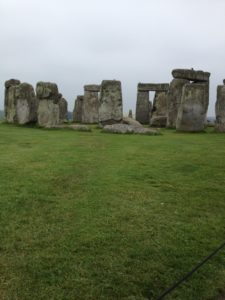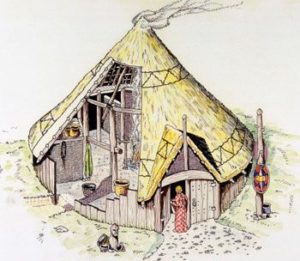Below is a detailed article about the Pre Roman Britain, that is, Britain before being invaded by the Romans. The culture, surrounding, languages and many other factors were much different than the Roman times and the times after that. It is also known as the British Iron Age. Let us learn more about Pre Roman Britain below.
British Iron Age
Contents
The term British Iron Age is a term used by archaeologists to refer to the times in Britain before the Roman invasion. It is not only about the Iron Age in Britain but also an array of diversity and cultural history.
Time Period of the Pre Roman Britain or the British Iron Age
The earliest Iron Age recorded can go back to as far as the year 800 BC. 800 BC to 600 BC is referred to as the Earliest Iron Age. From 600 BC to 400 BC is called the early iron age. 400 BC to 100 BC refers to as the middle iron age. The years 100 BC to 50 BC is counted under the late iron age and the latest iron age would be from 50 BC to 100 AD.
The end of the iron age refers to the early roman age in British history.
Evidence from the Pre Roman Britain
There was a field system, primarily, the Celtic field system that indicated the existence of permanent settlements of people in an area and less migration. It also showed the use of land that people made grew more effective as time passed by. Structures like the Stonehenge indicate the existence and the realization of the importance of a social group or an economic gathering.

Borders are discovered around these areas that show the presence of boundaries. New weapons types are discovered in this age such as the tongue sword and others found in Atlantic Europe. Traders from the Mediterranean came to Britain looking for minerals and bought goods with them to trade.
Defensive structures such as the hill forts are found from this age. Cadbury Castle and Danebury in Hampshire are some of the developed structures from the time. Hillforts are also found in Wessex.
Archaeologists also suggest that as time passed by from the earliest iron age to the late iron age, the standard of living of people became better. Social groups were also increased. This can be determined from the gradual developments of the hill forts from time to time.
People – Pre Roman Britain
It is believed that the British are descendants from the migrants who came to Britain – the Caledonians, Germanic tribes, Silures from South Wales, Iberians and more. During these times, the Celtic languages were most spoken which denote the existence of Celtic culture and traditions among the people.

There was also some migration from Central Europe into Britain.
Beliefs of People – Pre Roman Britain
The people worshipped many deities. Each tribe had a deity to worship. Most of these gods and goddesses were related to masculinity and fertility respectively. Many tribes also worshipped the earth. Wells and springs were constructed with respect to the female deities.
The deity ‘Sulis’ was worshipped in Bath, England. Religious practices also took place in these areas such as offerings and sacrifices. They also worshipped the rivers which were a source of life to the people that lived around and practiced farming. Rituals of slaughtering animals and depositing metal weapons in the river before in the river would take place. These practices are found similar in Gaul (present-day France).
Some buried jewelry that was a decoration of the statues of the gods is also found in archaeological remains. These are found in areas of Kent, England. Many temples and social gathering places have also been found in the areas. During the construction of the Heathrow airport, many shrines are seen from the archaeological excavations.
Trade in the British Iron Age
Trade was conducted and links were already developed in the Bronze age in Great Britain. Weapons were developed which was an example of great craftsmanship. Swords were imported into England by neighboring nations and copies were also made in the kingdom. Trade was also carried out among the Mediterranean countries.
Animal husbandry was also a source of income for people living in the Pre Roman Britain. They developed milk, cheese and leather from cattles. Later, they used sheep more than cattles as they are easier to maintain and few people would be required for their maintenance.
Hunting and fishing were also prominent sources of income for many people. Salt was used to preserve the fish and other things and was also a part of their diet. Vast number of coins are found from the British Iron Age. Gold coins were used across all of Europe and indicated higher value. Iron and steel coins were most popular and numerous excavations denote the use of these coins. A large collection of these coins was found in Leicestershire in the town of Hallaton known as the Hallaton Treasure.
End of the Pre Roman Era
As the Roman Invasion influence. Constructions of Romano Celtic shrines began in 60s AD. In areas where Roman influence was not large, that is, areas of Scotland that were a part of Pre Roman Britain the Iron Age beliefs and customs were seen to be practiced for a long time. It was a remarkable age of discovery, settlement, tradition, and culture. Even though there was no practice of education or literature there was tremendous skill-based learning that took place among the people that allowed them to live a satisfactory daily life.